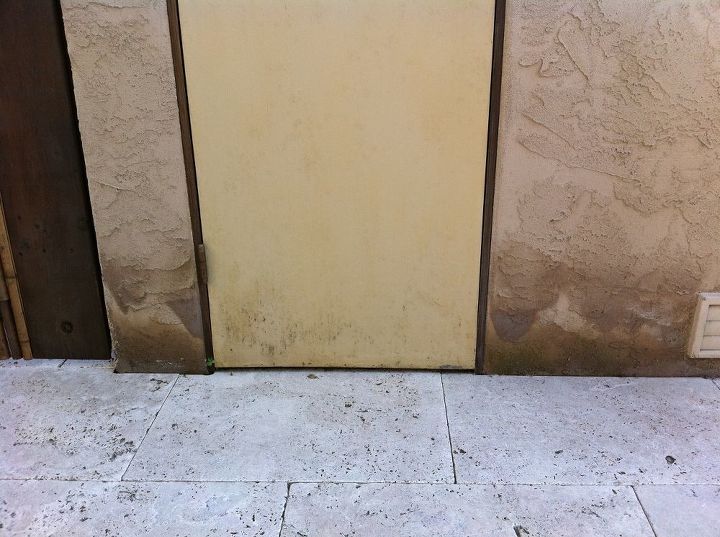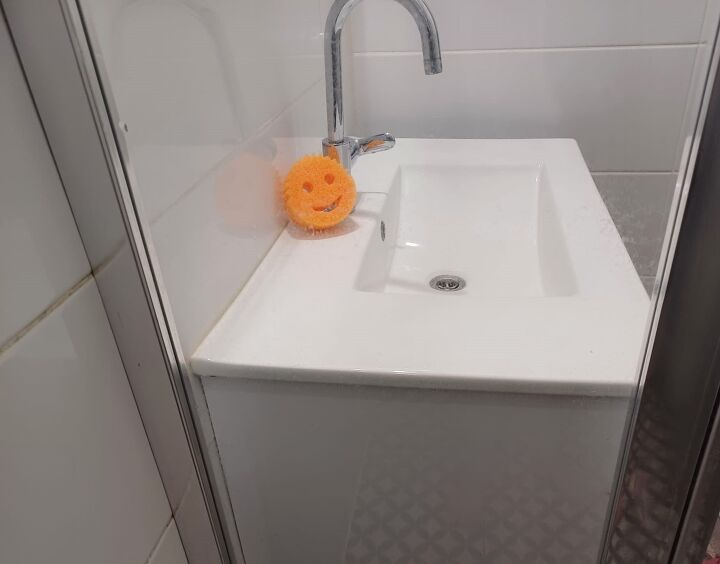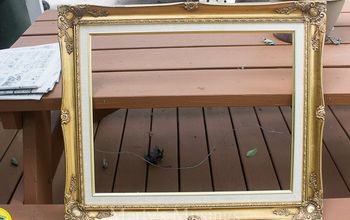moisture is seeping/wicking up on a section of our outside stucco wall after installation of travertine pavers.
-
Before you installed the pavers, there was probably a "weep screed" at the bottom of the stucco (I'm assuming here, sight unseen) It is a horizontal piece of metal where the stucco stops. It has holes in the bottom of it to allow the stucco, when wet, to "weep" or drain. If you buried the screed, the stucco cannot fully drain and dry out. Do you remember seeing that screed? If you did, comment here and we can go to the next step.
 Stephen B
on Mar 03, 2011
Helpful Reply
Stephen B
on Mar 03, 2011
Helpful Reply -
-
no 'weep screed' was visible. was probably burried by previous house owner's paver install (and missed by our contractor upon installing the travertine pavers)
 Martin
on Mar 03, 2011
Helpful Reply
Martin
on Mar 03, 2011
Helpful Reply -
-
Martin, Best thing to do would be to get a stucco contractor out there to give you an estimate on installing a weep screed. From that pic, I can't tell see how large the entire area is. Next best thing, is to do it your self...unless you are very familiar with a 3" grinder, I wouldn't recommend that you try it. Comment back about how "handy" you are or, are not.
 Stephen B
on Mar 03, 2011
Helpful Reply
Stephen B
on Mar 03, 2011
Helpful Reply -
-
stephen, thx for your prompt replies :-) did some 'digging': weep screed IS part of stucco wall, but it is burried approx. 4.0" below elevation of travertine paver's top edge; the problem area along this section of the stucco wall is about 4.5ft long. my 'handy'-factor is: capable; [i even own a grinder]. did you want me to 'slot' the stucco?
 Martin
on Mar 03, 2011
Helpful Reply
Martin
on Mar 03, 2011
Helpful Reply -
-
Martin, Kinda thought you'd find that...go to HD or Lowes and look at a weep screed b/4 you do any cutting. You will see that it has a flange which enables it to be nailed on to the studs or bottom plate of the wall. Unfortunately, slotting the stucco won't do the trick. The screed should be retrofitted. When (& if ) you cut the stucco, it is 7/8" deep. Behind it there is chicken wire on top of black paper. Try not to cut that out. Peel up that paper & wire to expose the framing. Once again, look at the flange on the screed and cut high enough to allow you to fasten the screed to the studs or bottom plate (bottom plate is best because it will keep it straight, even in a small area) Once you have fastened the screed, fold the paper and wire back down over the flange. Staple or nail it back into place (staples are better...careful not to poke holes in the paper) Go buy a stucco repair kit and follow the directions. The stucco should be applied in three applications...first coat roughly 1/2", second..3/8" allowing for a color coat of approx. 1/8 to 3/16" in thickness. If you are going to paint the stucco, both coats can be a little thicker or just flush up the new with the existing stucco. Note: From your pix, it doesn't look like your stucco has been painted. If you don't elect to use a color coat, you will have to paint the entire area. Don't use elastomeric paint or the stucco will not drain. Comment back if you need any more help. Sound like something you can do?
 Stephen B
on Mar 03, 2011
Helpful Reply
Stephen B
on Mar 03, 2011
Helpful Reply -
-
Forgot one thing....bottom of screed, when finished, should be minimum 3" above deck...you can get away with two...your choice.
 Stephen B
on Mar 03, 2011
Helpful Reply
Stephen B
on Mar 03, 2011
Helpful Reply -
-
This looks like a very bad situation. Did you have to cut off the bottom of the door? I am very uncomfortable with the idea that the level of the travertine is above the level of the slab or foundation on the other side of the stucco. This is only asking for trouble in the future. The original screed was probably nailed to the bottom plate, so if that was buried 4" below the travertine, there needs to be some kind of water proofing behind the stucco to prevent water from getting into the building. Waterproofing in terms of 30# felt backed by plywood and sealed with tar.
 Paul Slayton Contracting
on Mar 03, 2011
Helpful Reply
Paul Slayton Contracting
on Mar 03, 2011
Helpful Reply -
-
Oh yes wicking stucco, The sill has to be replaces in the wall more than likely. But the stucco is gone. You need to cut the stucco above the bottom hing in the door with a carbon balde on a saw. remove all wet or molded areas and maybe the framing. Let dry with fans. This will be a hard cure as well. Is the tile around this area not under it? If so then there's the issue and to fix it is not hard but will take some. You may need a poured lower ledger to place wall on.
 Hudson Designs
on Mar 03, 2011
Helpful Reply
Hudson Designs
on Mar 03, 2011
Helpful Reply -
Related Discussions
How do I clean salt marks on my salt water pool?
My salt water pool leaves white marks all around the pool I have tried everything to remove them with no luck. Can someone please help me????
If you could redo your master bathroom, what would you change?
Dreaming of a master bathroom remodel?Tell us: If you could change just one thing, what would it be?Your input could inspire others looking for master bathroom ideas ... See more
Hardwood Floors or Carpet in Bedroom: What's Your Preference?
Hey Hometalkers! We've got a cozy debate going on here: when it comes to bedroom flooring, do you lean towards the warmth of carpet or the timeless elegance of hardwo... See more
What can I do about wood smoke coming into my house?
I need help. My back door neighbor heats with a wood stove all winter. They are downhill from me. Almost all their smoke makes its way into my house, causing headache... See more
How to find out the value of antique furniture
My husband and I are looking to sell his grandmother's dining room set but, we have no idea what to ask for it. We could not find any markings as to who made it, all ... See more
How do I fix a broken metal hanging rod in my closet
I have a broken shelf hanging rod in my closet I tried gluing And taping it and nothing worked I need help and also the shelf is slightly bent





